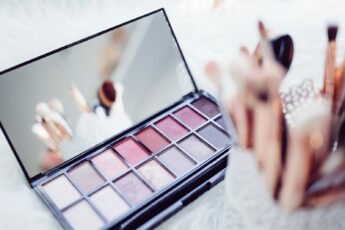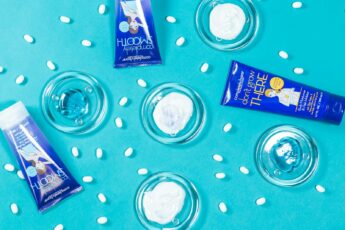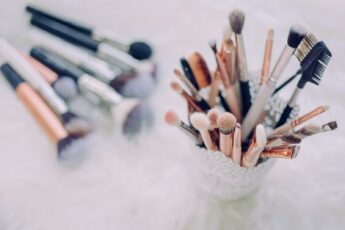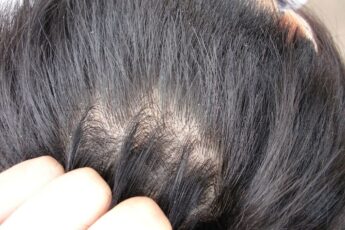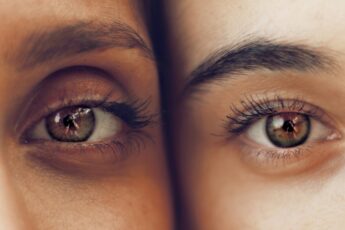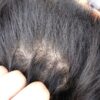Men’s Hair Care Essentials
As a beauty industry expert, I’ve seen men’s grooming habits evolve significantly over the years. Men’s hair care has become a crucial aspect of personal grooming, moving beyond basic cleanliness to encompass style, health, and self-expression.
In this article, I’ll guide you through the essentials of men’s hair care. We’ll explore everything from understanding your hair type to choosing the right products and techniques. Whether you’re dealing with thinning hair, want to maintain a stylish look, or simply aim to keep your locks healthy, this comprehensive guide has you covered.
Men’s hair care isn’t complicated, but it does require some knowledge and effort. By the end of this article, you’ll have the tools to create an effective hair care routine tailored to your needs.
Here’s a quick overview of what we’ll cover:
- Hair biology basics
- Daily cleansing routines
- Conditioning and moisturizing
- Styling products and techniques
- Hair loss prevention
- Grooming tools
- Professional services
- Nutrition for hair health
Remember, good hair care is an investment in yourself. It boosts confidence and contributes to your overall appearance. Let’s dive in and unlock the secrets to great-looking hair.
“Your hair is the crown you never take off. Treat it well.”
This journey through men’s hair care will empower you to make informed decisions about your grooming routine. Stay tuned for insights, tips, and expert advice that will transform your approach to hair care.
Understanding Male Hair Biology
To care for your hair effectively, you need to understand its basic structure and how it grows. Men’s hair has some unique characteristics that influence its appearance and health.
First, let’s talk about the scalp. Men typically have thicker skin on their scalps, which can lead to more oil production. This extra oil can be both a blessing and a curse – it provides natural protection but can also lead to greasy-looking hair if not managed properly.
Hormones play a crucial role in male hair growth and loss. Testosterone, when converted to dihydrotestosterone (DHT), can shrink hair follicles in genetically susceptible men, leading to hair thinning or loss.
Men’s hair generally falls into these types:
- Straight
- Wavy
- Curly
- Coily
Each type has its own needs when it comes to care and styling. For example, curly and coily hair often needs more moisturizing, while straight hair might require frequent washing to control oil.
Here’s a quick guide to hair textures:
| Texture | Characteristics | Care Needs |
|---|---|---|
| Fine | Thin strands, easily damaged | Gentle products, volumizing treatments |
| Medium | Average thickness, versatile | Balanced care, various styling options |
| Coarse | Thick strands, can be dry | Moisturizing products, frizz control |
Understanding your hair type and texture will help you choose the right products and care routine.
“Know your hair, and you’re halfway to mastering its care.”
Daily Cleansing Routines
A proper cleansing routine forms the foundation of good hair care. The key is to find the right balance – clean enough to remove dirt and excess oil but not so much that you strip your hair of its natural oils.
When selecting a shampoo, consider your hair type and any specific issues you’re dealing with. Here are some options:
- For oily hair: Clarifying shampoos
- For dry or damaged hair: Moisturizing shampoos
- For hair loss concerns: Strengthening shampoos with ingredients like biotin
Washing technique matters, too. I recommend these steps:
- Wet your hair thoroughly with warm (not hot) water.
- Apply a small amount of shampoo to your scalp.
- Massage gently with your fingertips, not your nails.
- Rinse thoroughly until the water runs clear.
How often should you wash? It depends on your hair type, lifestyle, and personal preference. As a general guide:
- Oily hair: Daily or every other day
- Normal hair: 2-3 times a week
- Dry hair: 1-2 times a week
If you exercise regularly or work in a dirty environment, you might need to wash more frequently. However, consider using a conditioner-only wash (co-wash) between shampoos to avoid drying out your hair.
“Cleanse your hair like you cleanse your body – thoroughly but gently.”
Remember, these are guidelines. Pay attention to how your hair looks and feels, and adjust your routine accordingly. The goal is to have clean, healthy-looking hair that’s easy to style.
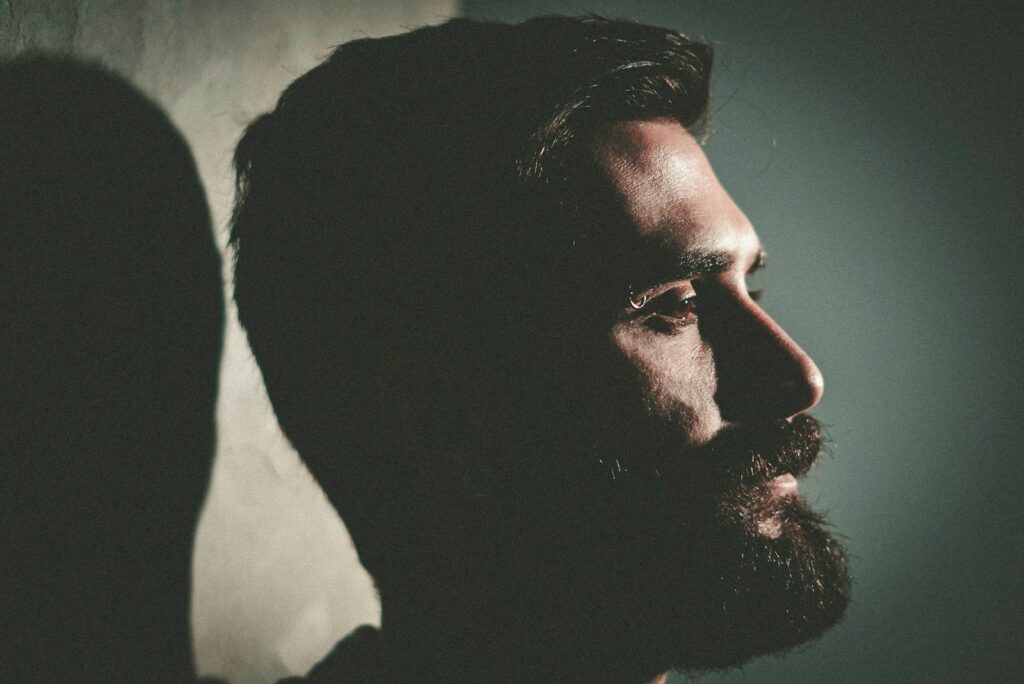
Conditioning and Moisturizing
Conditioning is a crucial step in men’s hair care that many overlook. It helps moisturize, detangle, and protect hair. The right conditioner can make a world of difference in how hair looks and feels.
There are two main types of conditioners:
- Rinse-out conditioners: Apply after shampooing and rinse off before you finish your shower.
- Leave-in conditioners: Apply to damp hair and leave in for all-day moisture.
For most men, a rinse-out conditioner works well. However, if you have dry, curly, or coarse hair, you might benefit from a leave-in product.
When applying conditioner, focus on the ends of your hair, which tend to be drier. Avoid applying directly to your scalp, as this can lead to greasiness.
Deep conditioning treatments can provide extra nourishment. I recommend using one once a week or every two weeks, depending on your hair’s needs.
Here’s a quick guide to natural oils that can boost your hair’s health:
| Oil | Benefits |
|---|---|
| Argan | Adds shine, fights frizz |
| Coconut | Moisturizes, may help with protein loss |
| Jojoba | Similar to natural scalp oils, good for balance |
Remember, a little goes a long way with oils. Start with a small amount and adjust as needed.
“Condition your hair like you would water a plant – give it what it needs to thrive.”
Styling Products and Techniques
The right styling products and techniques can transform your look. But with so many options available, choosing can feel overwhelming. Let’s break it down.
Common styling products:
- Gels: Provide strong hold and shine. Great for sleek looks.
- Pomades: Offer medium hold with a glossy finish. Ideal for classic styles.
- Waxes: Give a strong hold with a matte finish. Perfect for textured styles.
- Clays: Provide a strong hold with a matte finish. Good for messy, natural looks.
When applying these products, start with a small amount. You can always add more, but using too much can leave your hair looking greasy or stiff.
For different styles, try these techniques:
- Slicked back: Apply product to damp hair and comb back from forehead to nape.
- Textured crop: Work product through dry hair; use fingers to create a piece-y texture.
- Quiff: Apply product to damp hair and blow dry while brushing upwards at the front.
Speaking of blow drying, heat styling tools can be great for achieving certain looks. However, they can also damage your hair if used incorrectly. Always use a heat protectant product and keep the dryer moving to avoid concentrating heat in one spot.
Here’s a quick guide to heat styling tools:
| Tool | Best for | Tips |
|---|---|---|
| Blow dryer | Volume, direction | Use medium heat and cool shot to set |
| Flat iron | Straightening | Use on dry hair. Move quickly |
| Curling iron | Adding waves | Wrap hair around the barrel, and hold it briefly |
“Style is personal, but healthy hair is universal. Choose products that enhance, not damage.”
Remember, the best style is one that works with your hair type and fits your lifestyle. Don’t be afraid to experiment to find what works best for you.
Hair Loss Prevention and Treatment
Hair loss is a common concern for many men. While some hair loss is natural with age, there are ways to slow it down and maintain a fuller head of hair.
The first step is recognizing the early signs of male pattern baldness:
- Receding hairline
- Thinning at the crown
- Overall loss of hair density
If you notice these signs, don’t panic. Early intervention can make a big difference.
Prescription medications are often the first line of defense:
- Finasteride: Blocks DHT production
- Minoxidil: Stimulates hair follicles
These medications can be effective, but they require consistent use and can have side effects. Always consult with a doctor before starting any treatment.
Non-medical interventions can also help:
| Intervention | How it helps |
|---|---|
| Scalp massage | Increases blood flow to follicles |
| Reduce stress | High stress can contribute to hair loss |
| Quit smoking | Smoking can damage hair follicles |
Lifestyle changes like eating a balanced diet, getting enough sleep, and staying hydrated can also support hair health.
“Prevention is easier than regrowth. Take action at the first sign of thinning.”
Remember, hair loss can be emotionally challenging. If it’s affecting your self-esteem, don’t hesitate to seek support.

Grooming Tools and Equipment
The right tools can make a big difference in your hair care routine. Here are some essential grooming equipment.
Brushes and combs are basic but crucial. Here’s a quick guide:
- Wide-tooth comb: Great for detangling wet hair
- Paddle brush: Good for straightening and smoothing
- Round brush: Ideal for adding volume when blow-drying
Choose brushes with natural bristles for fine hair and synthetic bristles for thick or coarse hair.
Electric trimmers and clippers are handy for maintaining short styles or cleaning up between haircuts. When choosing one, consider:
- Cord vs. cordless
- Blade material (stainless steel is durable)
- Adjustable length settings
For at-home trimming, invest in a pair of sharp, hair-cutting scissors. Regular scissors can damage your hair and give uneven results.
Here’s a basic kit for home grooming:
| Tool | Use |
|---|---|
| Wide-tooth comb | Detangling |
| Paddle brush | Daily styling |
| Hair-cutting scissors | Trimming |
| Electric trimmer | Maintaining short styles |
| Hand mirror | Checking the back of your head |
Remember to clean your tools regularly. The buildup of hair and products can harbor bacteria.
“Your tools are an extension of your hands. Choose wisely and care for them well.”
With the right tools, you can maintain your style between professional cuts and even tackle some simple trims at home. However, for major changes or complex cuts, it’s best to visit a professional.
Professional Services for Men
While home care is essential, professional services can take your hair game to the next level. Let’s explore the world of professional hair care for men.
Barbers vs. Salons: Both offer hair-cutting services, but there are key differences:
| Barber Shops | Salons |
|---|---|
| Specialize in short to medium styles | Handle all hair lengths |
| Often offer traditional shaves | Focus on cutting and coloring |
| Usually more affordable | Tend to be pricier |
| Casual, masculine atmosphere | Gender-neutral environment |
Choose based on your style preferences and comfort level. Many men enjoy the traditional barbershop experience, while others prefer the broader service range of salons.
Specialty treatments can address specific hair concerns:
- Scalp treatments: Deep clean and nourish your scalp
- Keratin treatments: Reduce frizz and add shine
- Hair coloring: Cover grays or try a new look
These services require skill to perform correctly, so it’s worth paying for professional expertise.
How often should you get a professional cut? It depends on your style and hair growth, but here’s a general guide:
- Short styles: Every 3-4 weeks
- Medium styles: Every 4-6 weeks
- Long styles: Every 6-8 weeks
“A good stylist doesn’t just cut hair; they sculpt your image.”
Remember, regular professional care can help maintain your style and catch any developing hair or scalp issues early.
Nutrition and Supplements for Hair Health
What you put into your body affects your hair just as much as what you put on it. A balanced diet rich in certain nutrients can promote healthy hair growth and strength.
Key vitamins and minerals for hair health include:
- Biotin (Vitamin B7): Supports keratin production
- Vitamin D: Helps create new hair follicles
- Iron: Carries oxygen to hair roots
- Zinc: Aids in hair tissue growth and repair
You can get these nutrients from a balanced diet. Here are some hair-friendly foods:
| Nutrient | Food Sources |
|---|---|
| Biotin | Eggs, nuts, sweet potatoes |
| Vitamin D | Fatty fish, fortified foods |
| Iron | Red meat, spinach, lentils |
| Zinc | Oysters, beef, pumpkin seeds |
If you’re considering supplements, remember that they’re meant to supplement, not replace, a healthy diet. Always consult with a healthcare provider before starting any new supplement regimen.
Some people swear by hair-specific supplements, but the evidence for their effectiveness is mixed. If you decide to try them, give them at least 3-6 months to see any potential effects.
Beyond specific nutrients, general healthy habits can boost hair health:
- Stay hydrated
- Limit alcohol intake
- Quit smoking
- Manage stress
“Your hair is a reflection of your overall health. Nourish your body, and your hair will follow.”
Remember, dramatic hair changes or loss can sometimes indicate underlying health issues. If you notice sudden changes in your hair, consult a healthcare professional.
Embracing Comprehensive Men’s Hair Care
Throughout this guide, we’ve explored the many facets of men’s hair care. From understanding your hair biology to choosing the right products and techniques, you now know how to create an effective hair care routine.
Remember these key points:
- Know your hair type and its specific needs
- Cleanse and condition regularly
- Use styling products that work for your hair
- Address hair loss concerns early
- Invest in quality grooming tools
- Consider professional services for expert care
- Nourish your hair from the inside out
A good hair care routine doesn’t have to be complicated. Start with the basics and adjust as you learn what works best for you. Experiment with different products and techniques to find your perfect routine.
“Your hair is part of your identity. Care for it with knowledge and intention.”
Ultimately, good hair care is about more than appearance. It’s a form of self-care that can boost your confidence and overall well-being. Embrace your hair’s natural qualities and work with them, not against them.
With the information in this guide, you’re well-equipped to take control of your hair care journey. Here’s to healthy, great-looking hair!
